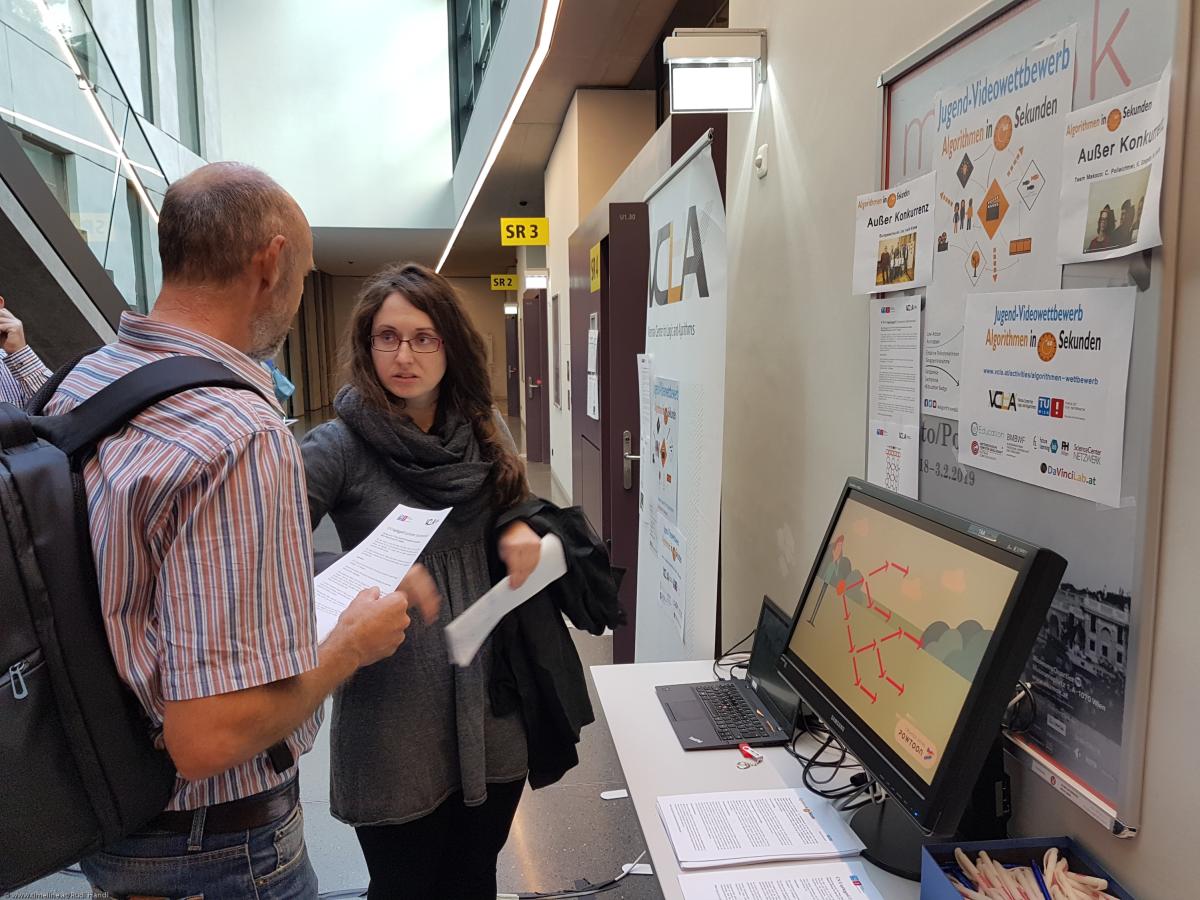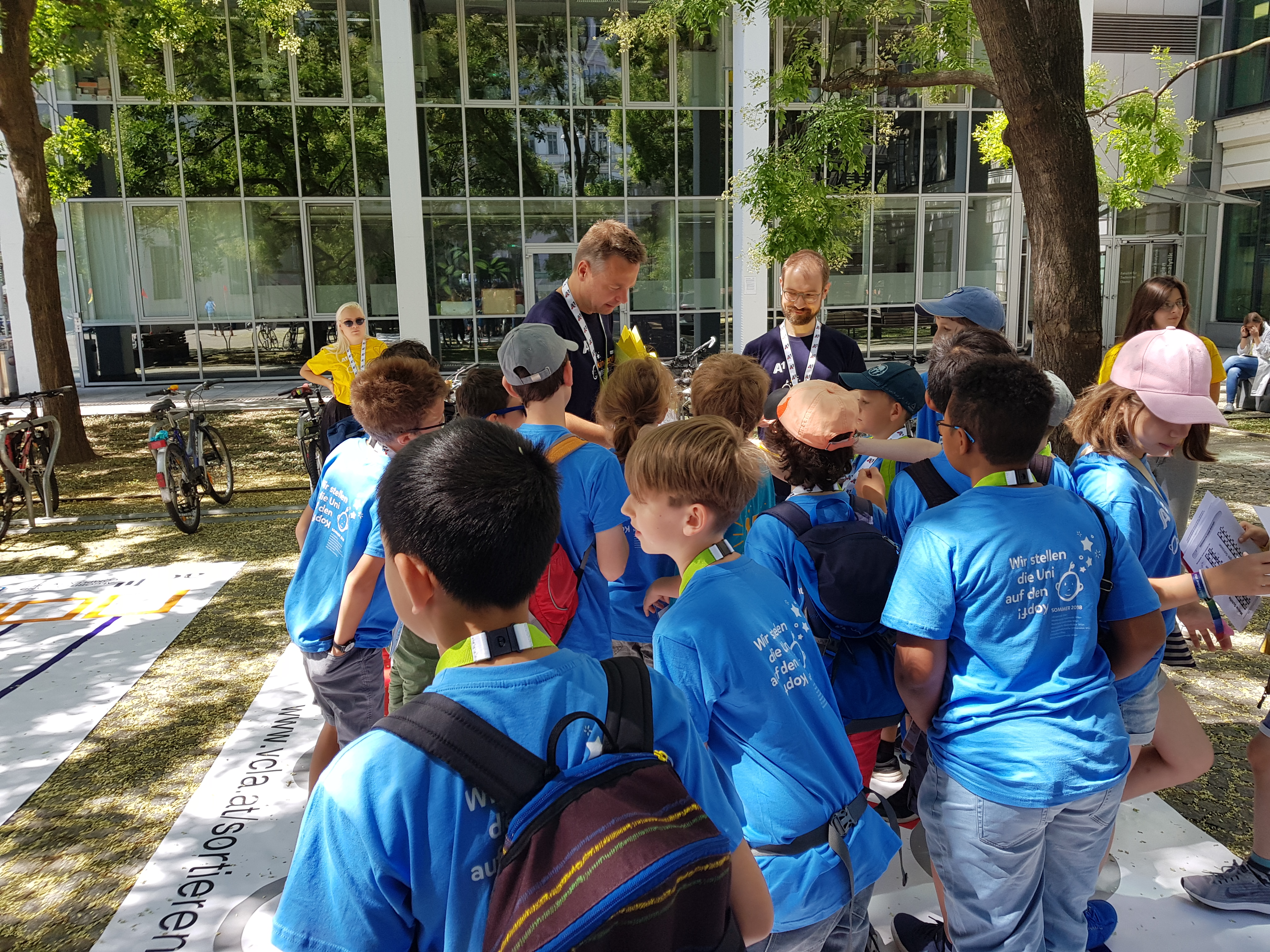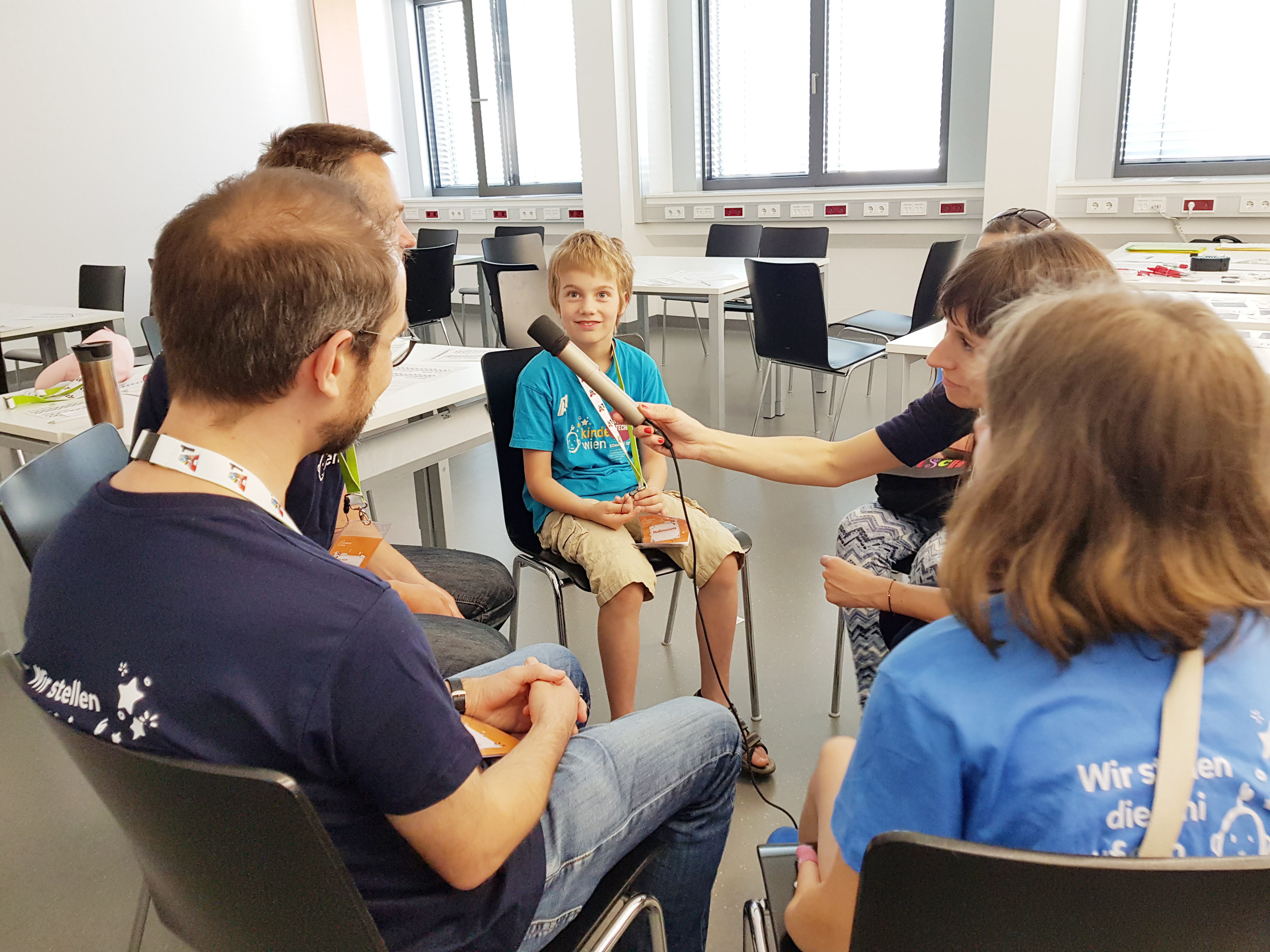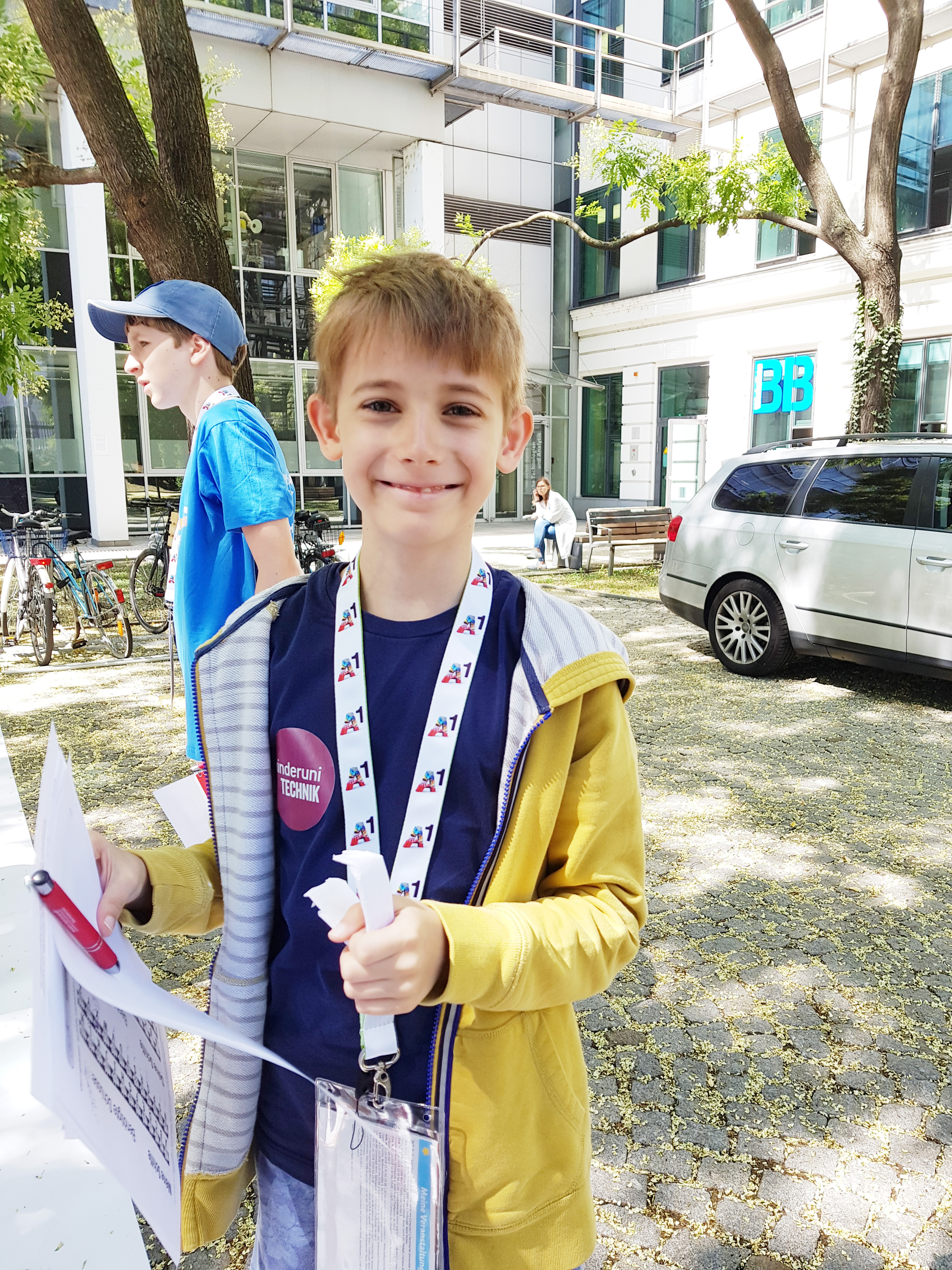Sorting
At the faculty of informatics of TU Wien, researchers use logic as a tool to think about the world. Especially in the growing research field of Artificial Intelligence, we perceive an increased usage of methods of logic. Computers, which can argue and judge independently, find their way into very diverse areas – e.g., medicine and business, but also into our everyday lives at home. The research group “Algorithms and Complexity” headed by Stefan Szeider is working on alorithms for especially complex problems which appear in artificial intellgince, logic, and optimization. In this field, the researchers of TU Wien are among the very best on an international level.
Experiment: Sorting network
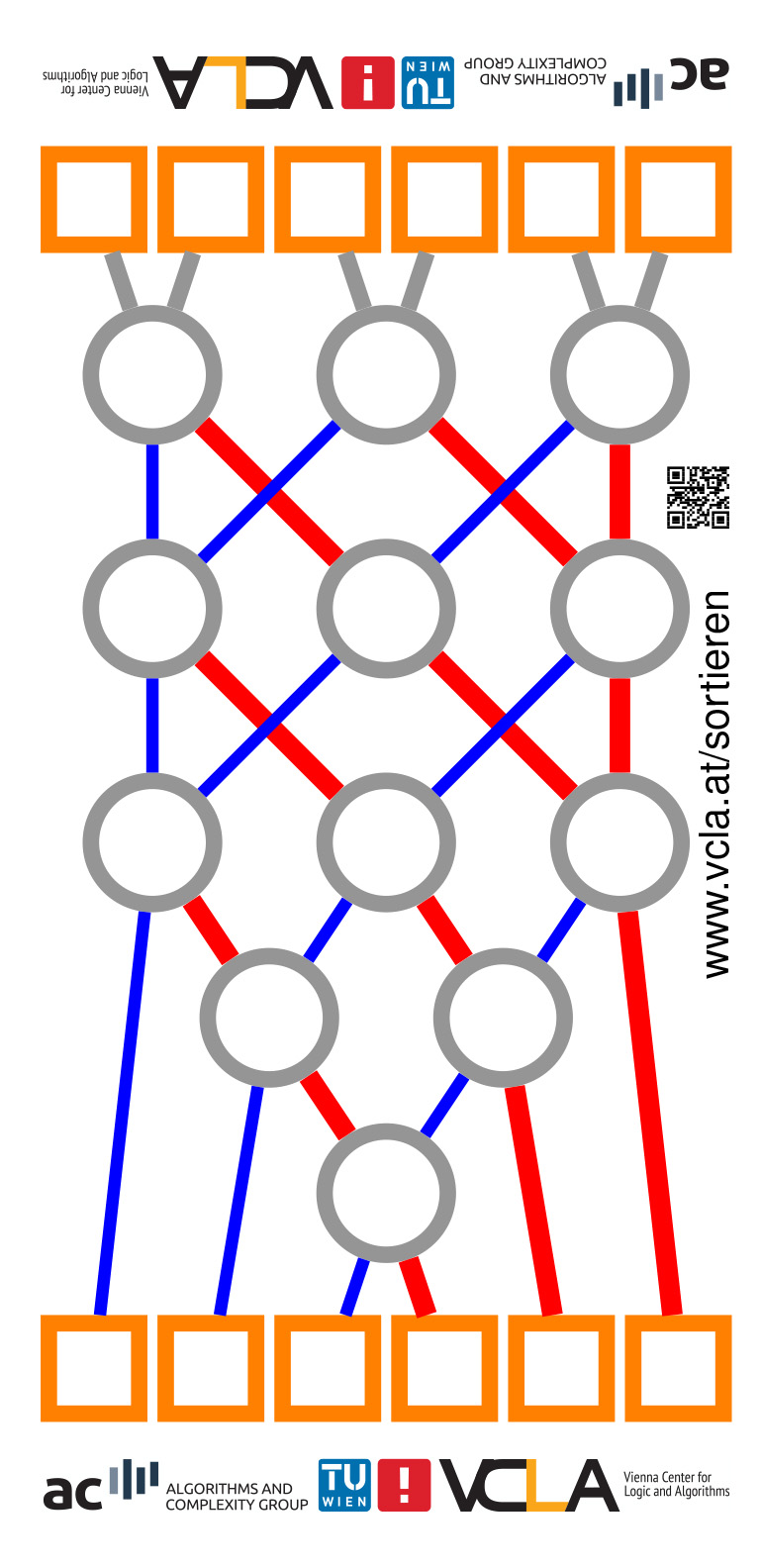 The picture on the left shows a schematic representation of a so-called sorting network. This sorting network works in the following way: Every participant steps on one of the orange squares (the input nodes) and receives a card with a random number on it. They then go on to the nearest sorting node (the gray circles in the picture) and compare numbers with the other person who steps on it. The person with the lower number follows the blue line, while the person with the higher number follows the red line. This process is then repeated until everyone arrives at another orange square (the output node). In this way, all the numbers will be sorted correctly in ascending order, and this works with letters (or other input) as well!
The picture on the left shows a schematic representation of a so-called sorting network. This sorting network works in the following way: Every participant steps on one of the orange squares (the input nodes) and receives a card with a random number on it. They then go on to the nearest sorting node (the gray circles in the picture) and compare numbers with the other person who steps on it. The person with the lower number follows the blue line, while the person with the higher number follows the red line. This process is then repeated until everyone arrives at another orange square (the output node). In this way, all the numbers will be sorted correctly in ascending order, and this works with letters (or other input) as well!
Such sorting networks have a number of applications within computer science, where they are implemented in different ways; one example is the development of algorithms. Sorting networks also give rise to interesting theoretical questions, e.g.: How many nodes does a network require in order to sort n numbers? What is the minimal required depth (i.e., the number of nodes that a number has to pass through between input and output node)?
The experiment discussed here represents the implementation of the well-known work Computer Science Unplugged – CS Unplugged.
World Record with Sorting Network
| 1999, United Kingdom – 25 schoolchildren – 635 network nodes |
2005, New Zealand – 21 schoolchildren – 441 network nodes |
June 2019, Austria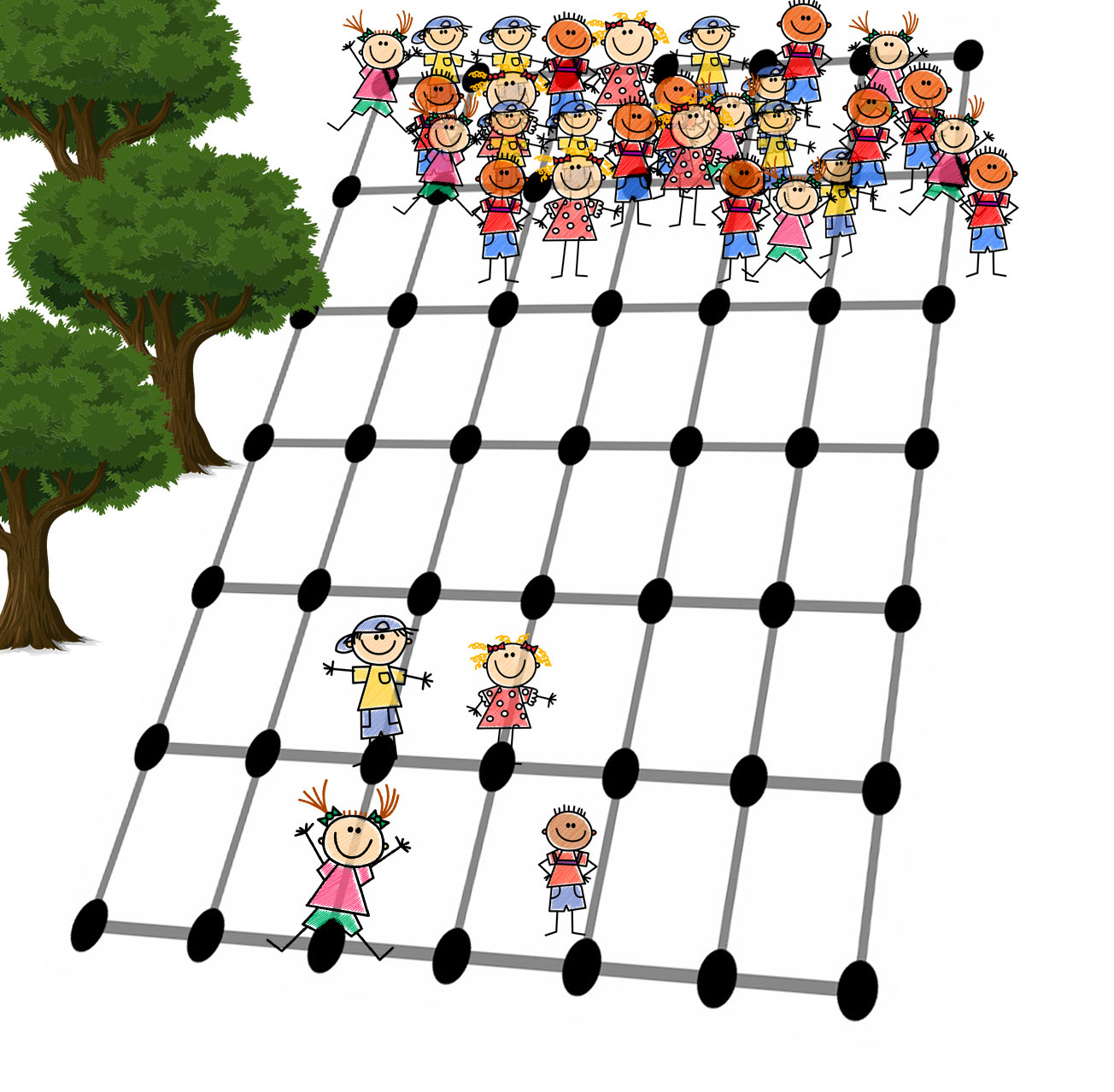
– 50 schoolchildren
– 2500 network nodes
The Vienna Center for Logic and Algorithms (VCLA) of TU Wien (technical university of Vienna) created the world’s biggest human sorting network and thereby achieved a world record. Within this sorting network, 60 schoolchildren walked across the field with random numbers, made sorting comparisons at the same time, and arrived sorted in ascending order at the network’s output nodes.
Click here to read the report!
11th Informatics Day
September 27, 2018
On September 27, 2018, the Austrian Computer Society (Österreichische Computer Gesellschaft) organized the 11th Informatics Day. Close to 150 interested teachers accepted the invitation to explore the world of computer science with the help of workshops, lectures, and exhibition stands. During recess, the teachers had the possibility to review the results of the youth video contest “Algorithms in 60 seconds”, and to have a look at the collection of teaching materials CS Unplugged. Click here for more information.
Technical Kids’ University 2018: How does a computer think?
June 8, 2018
As part of Kids’ University 2018, Prof. Martin Nöllenburg and Prof. Stefan Szeider created a workshop to help children understand how a computer thinks and solves problems. Together with the children, they had a look at different tasks presented in the collection of teaching materials Computer Science Unplugged – CS Unplugged.
more information on Kids’ University
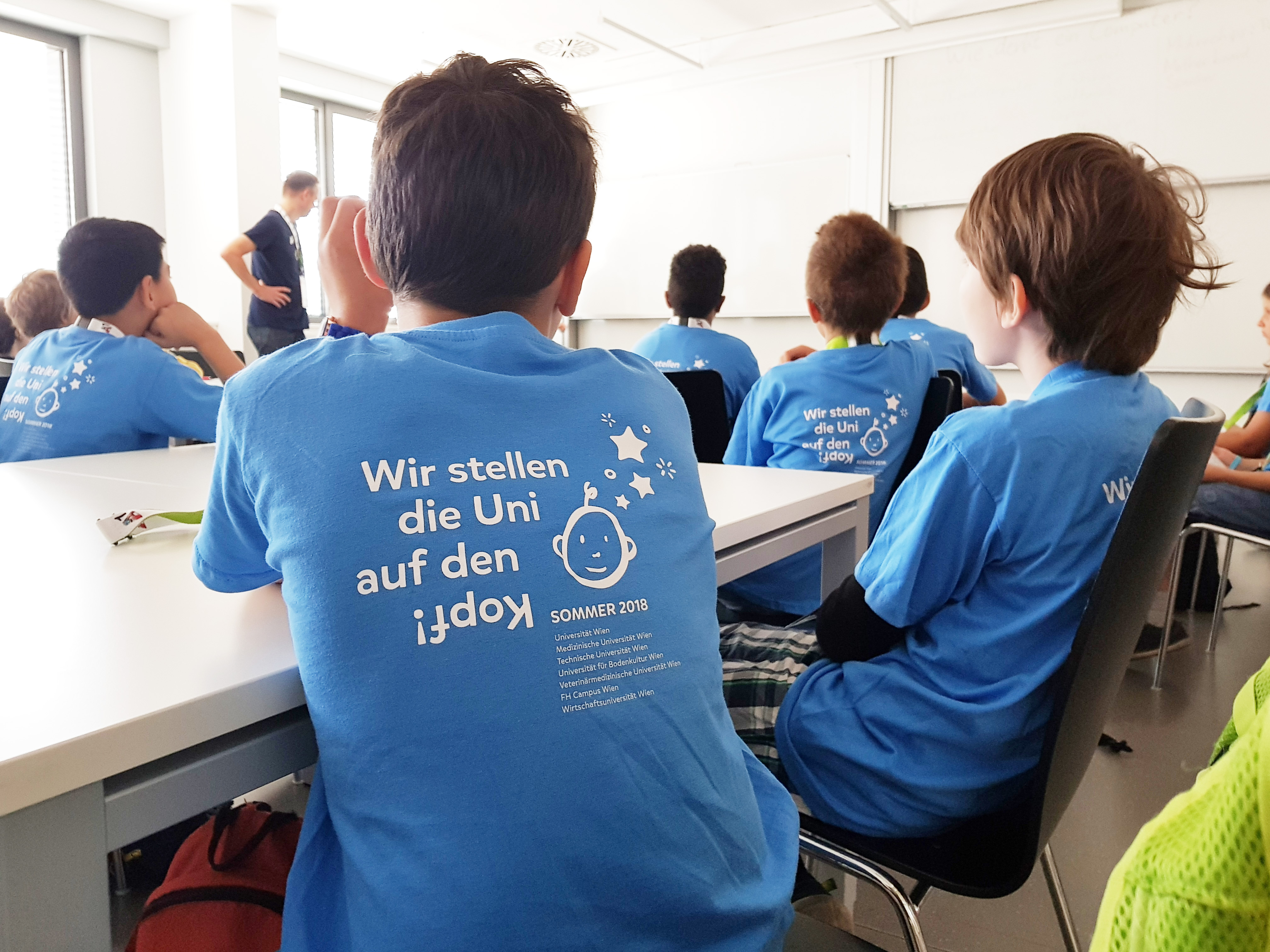 |
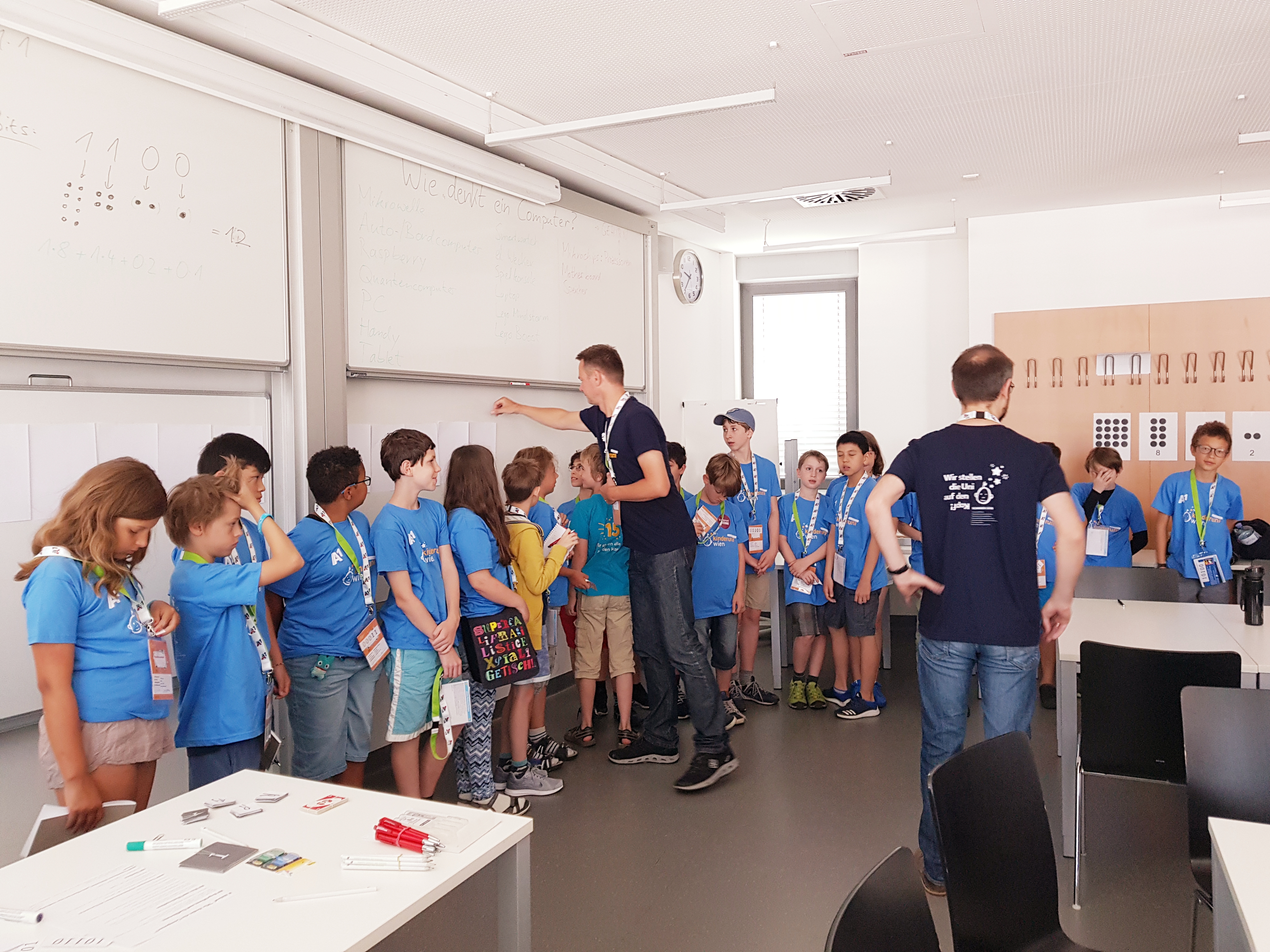 |
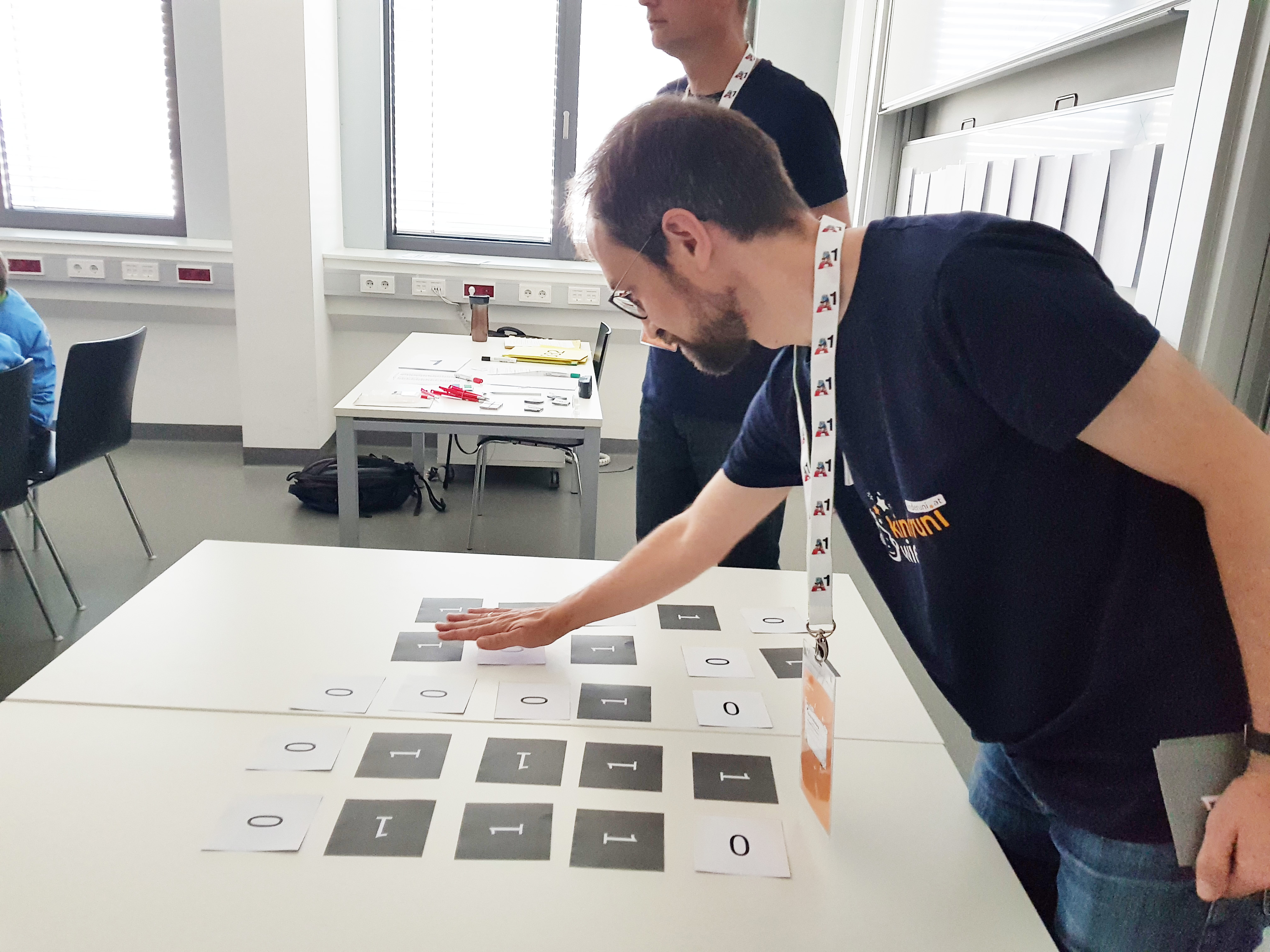 |
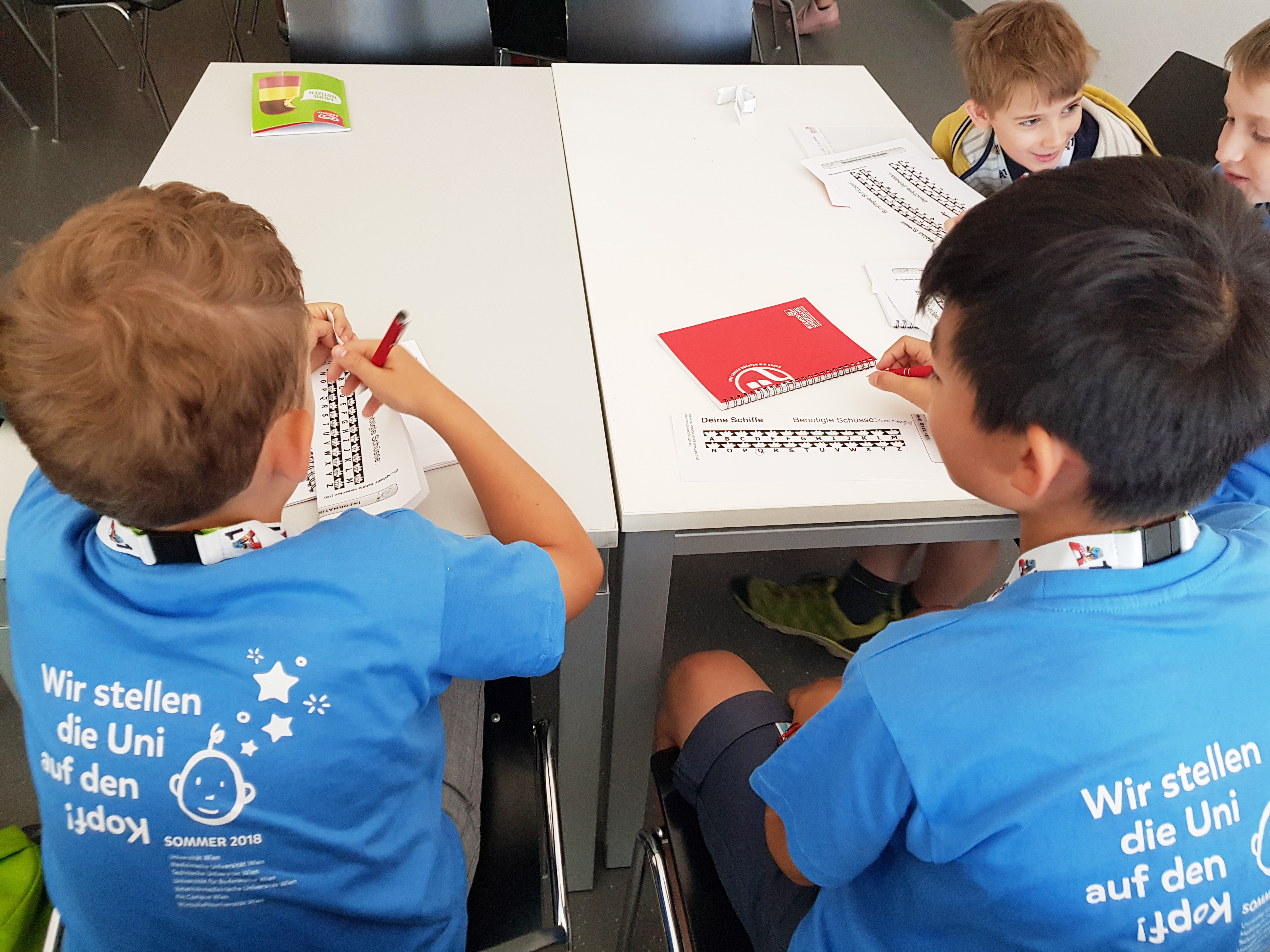 |
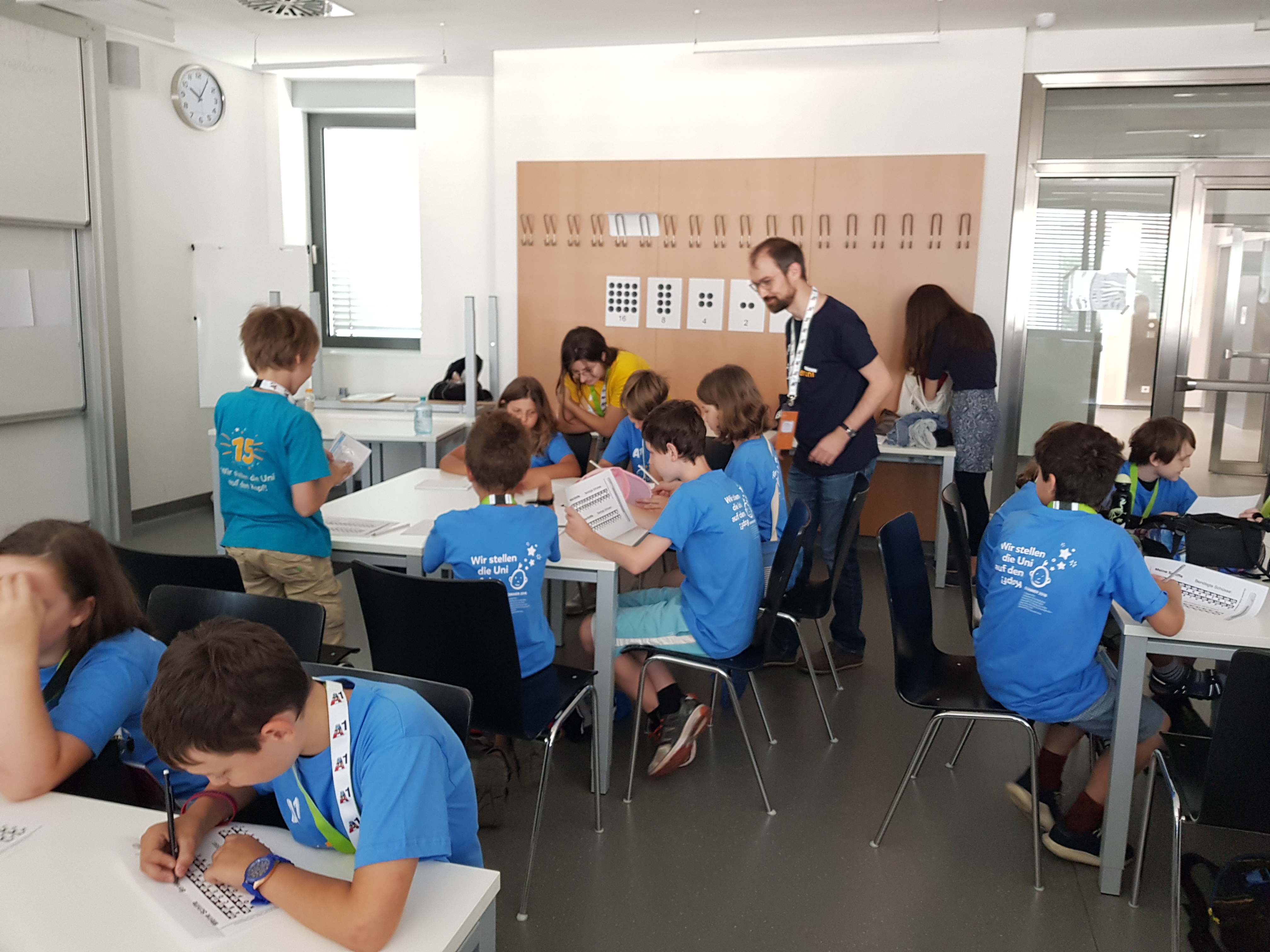 |
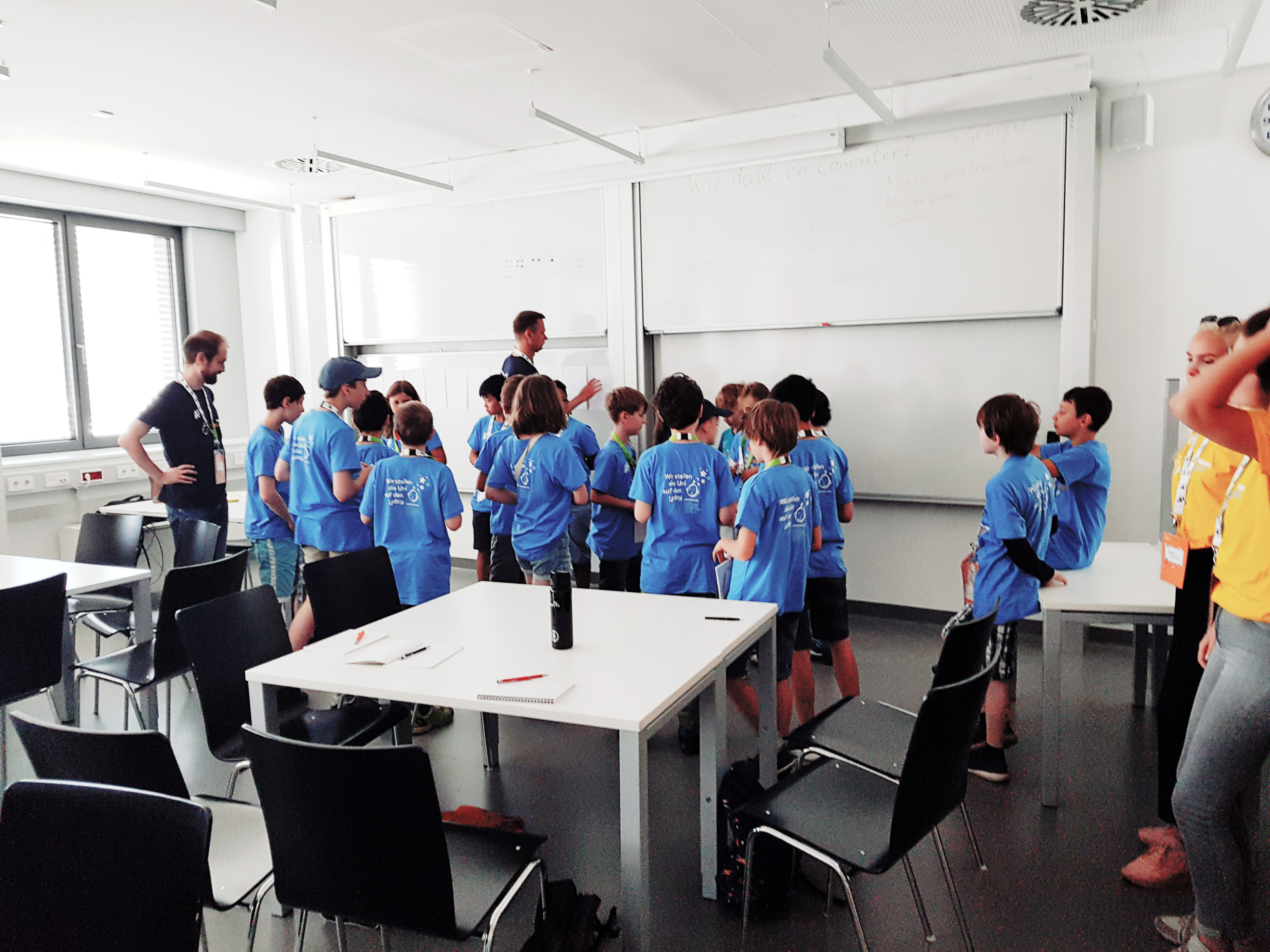 |
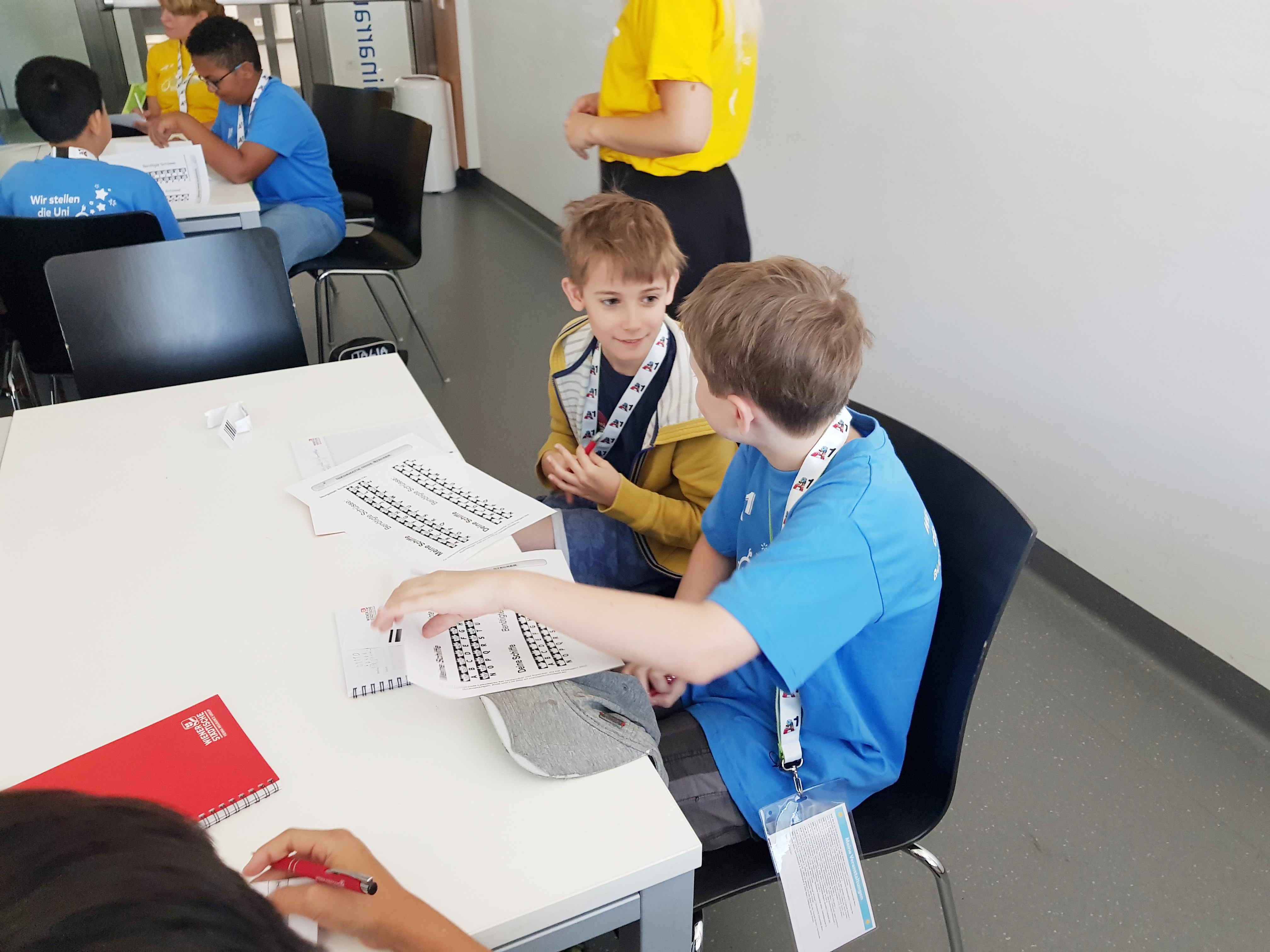 |
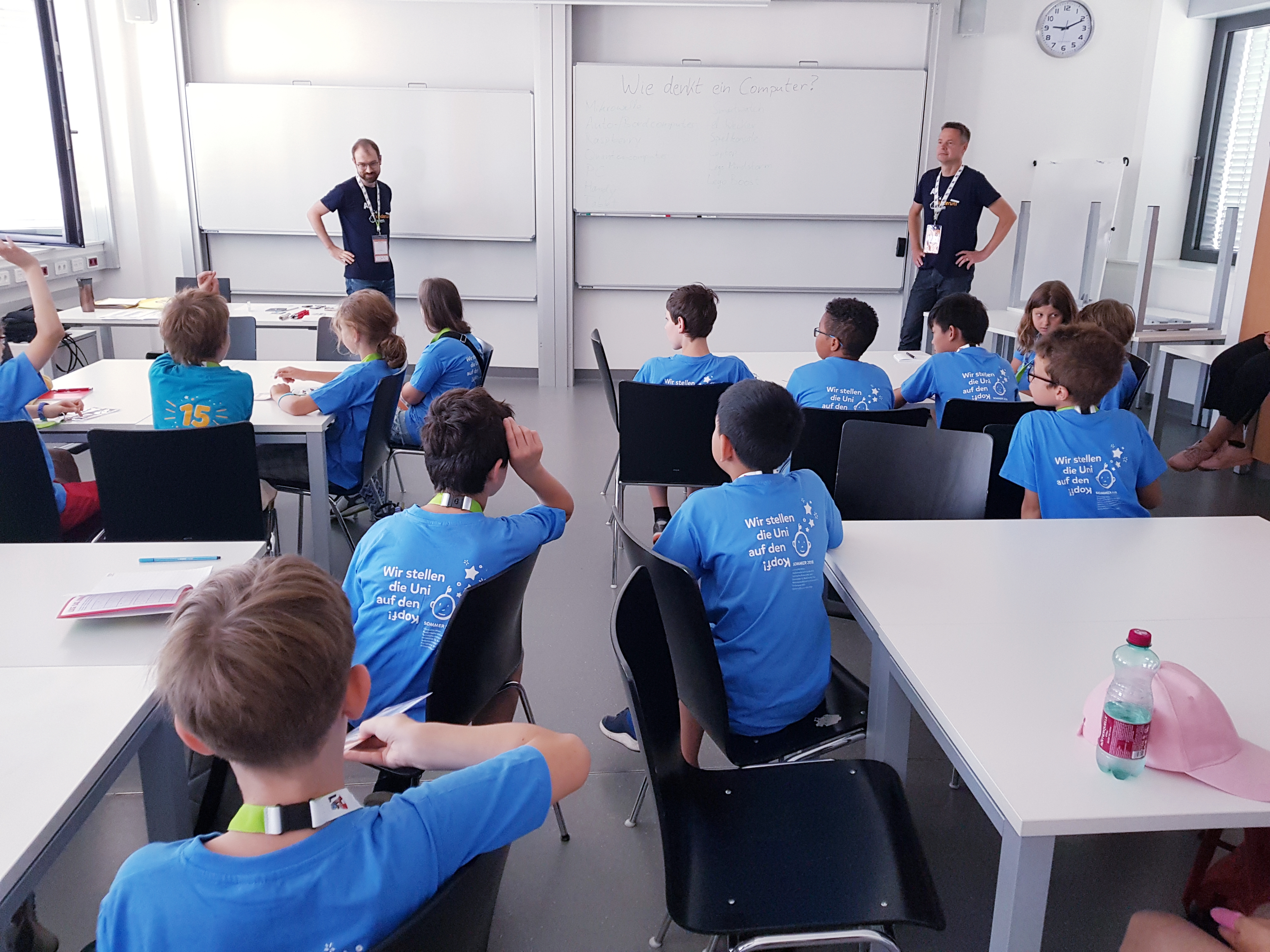 |
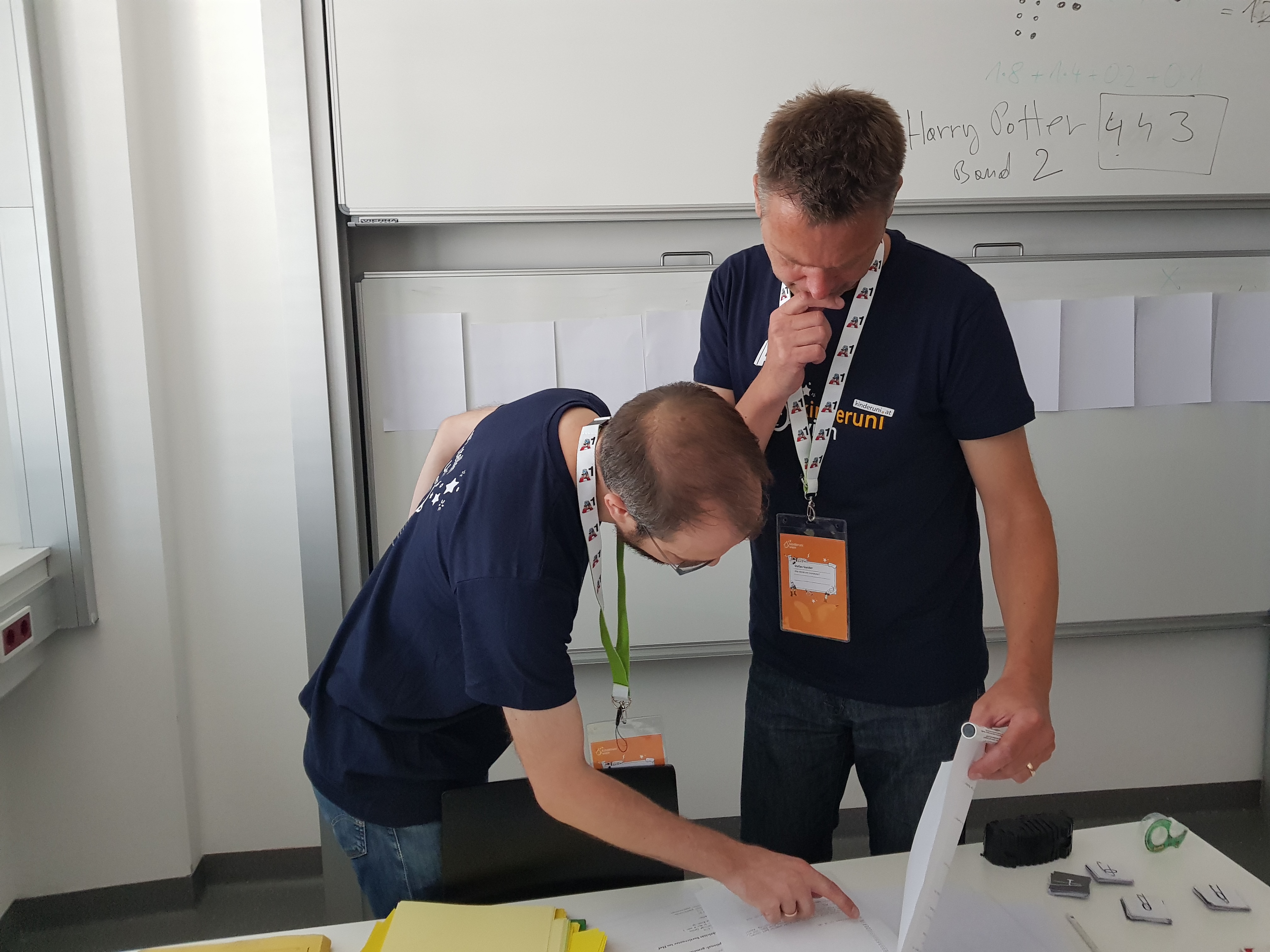 |
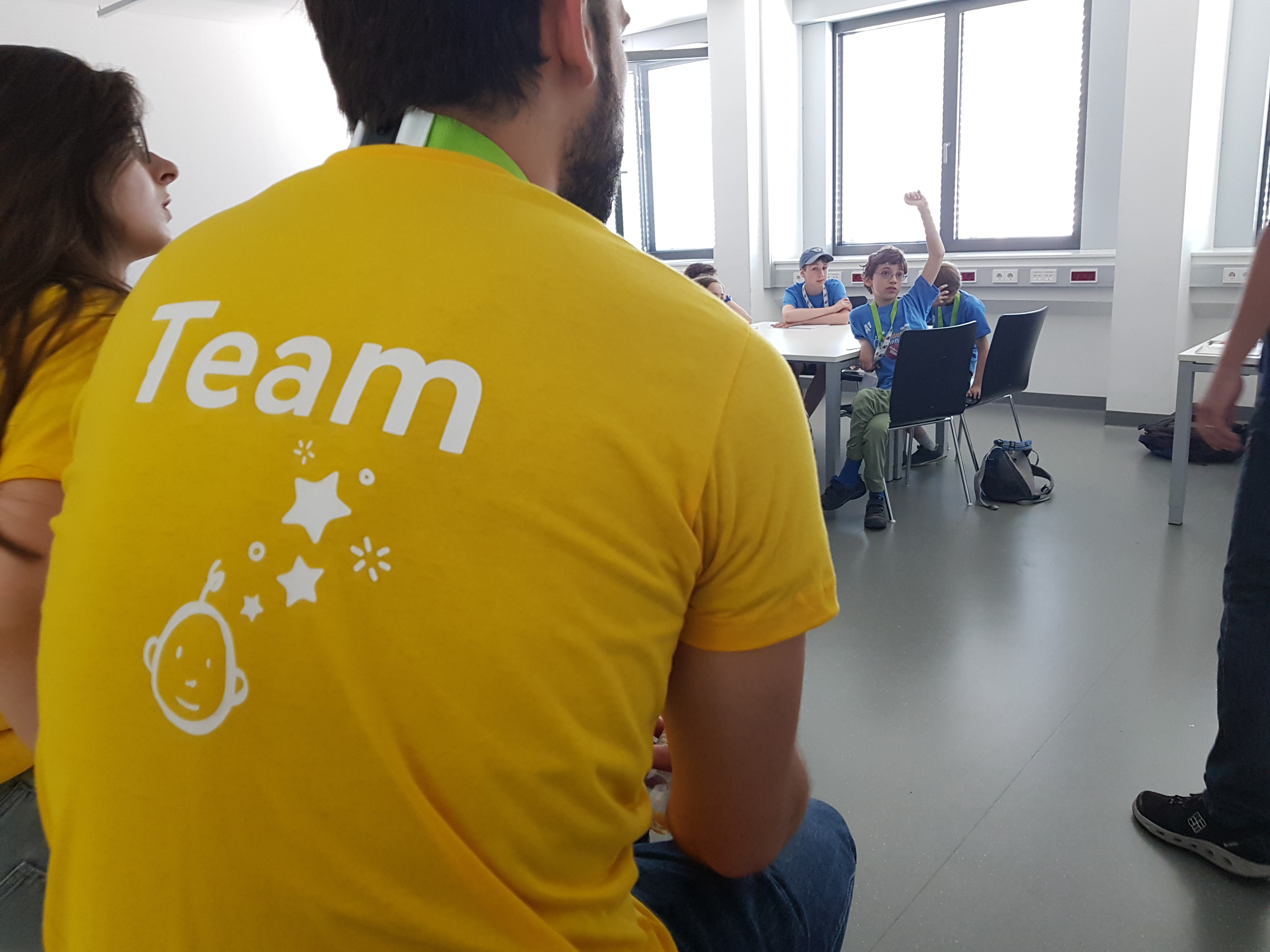 |
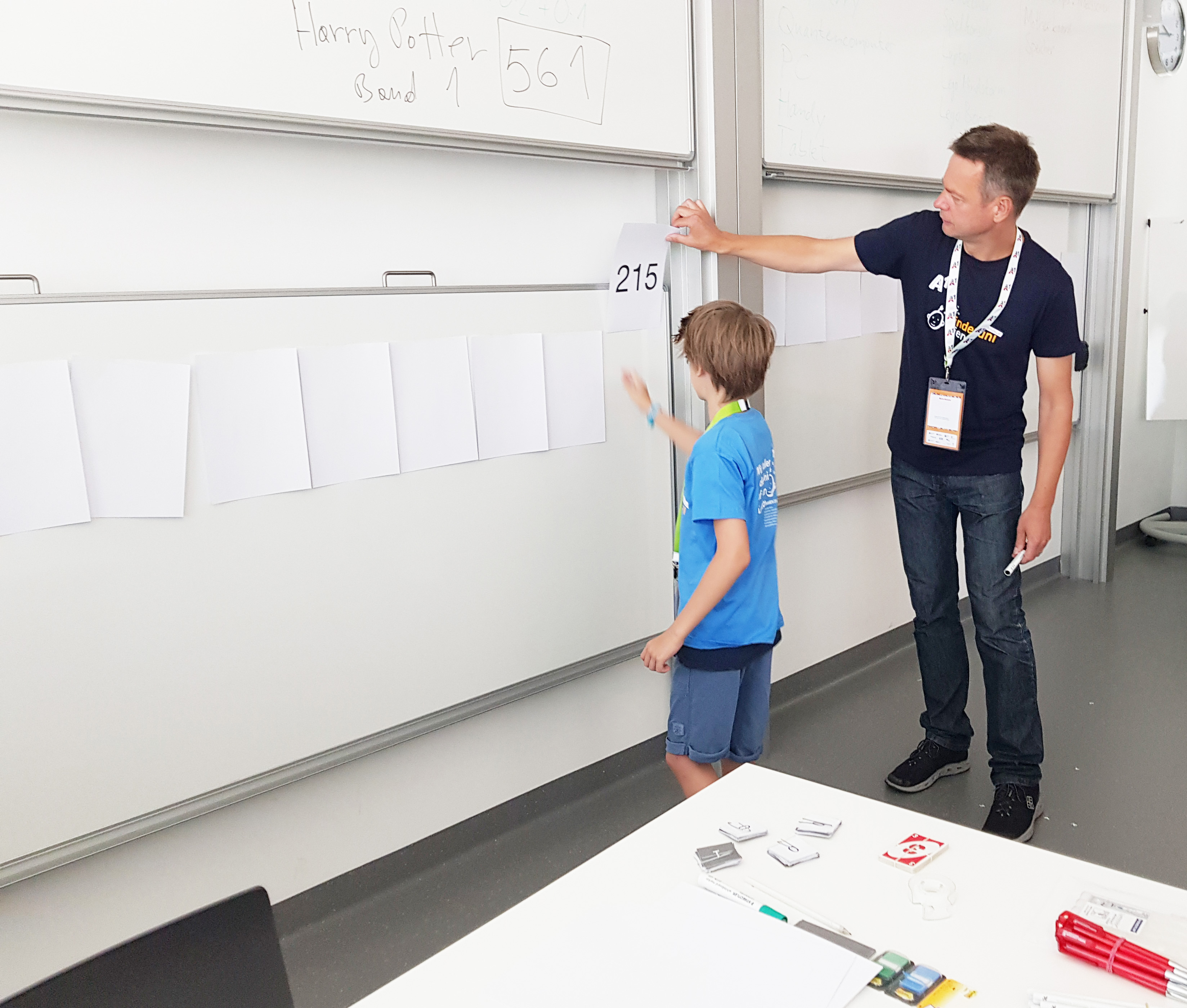 |
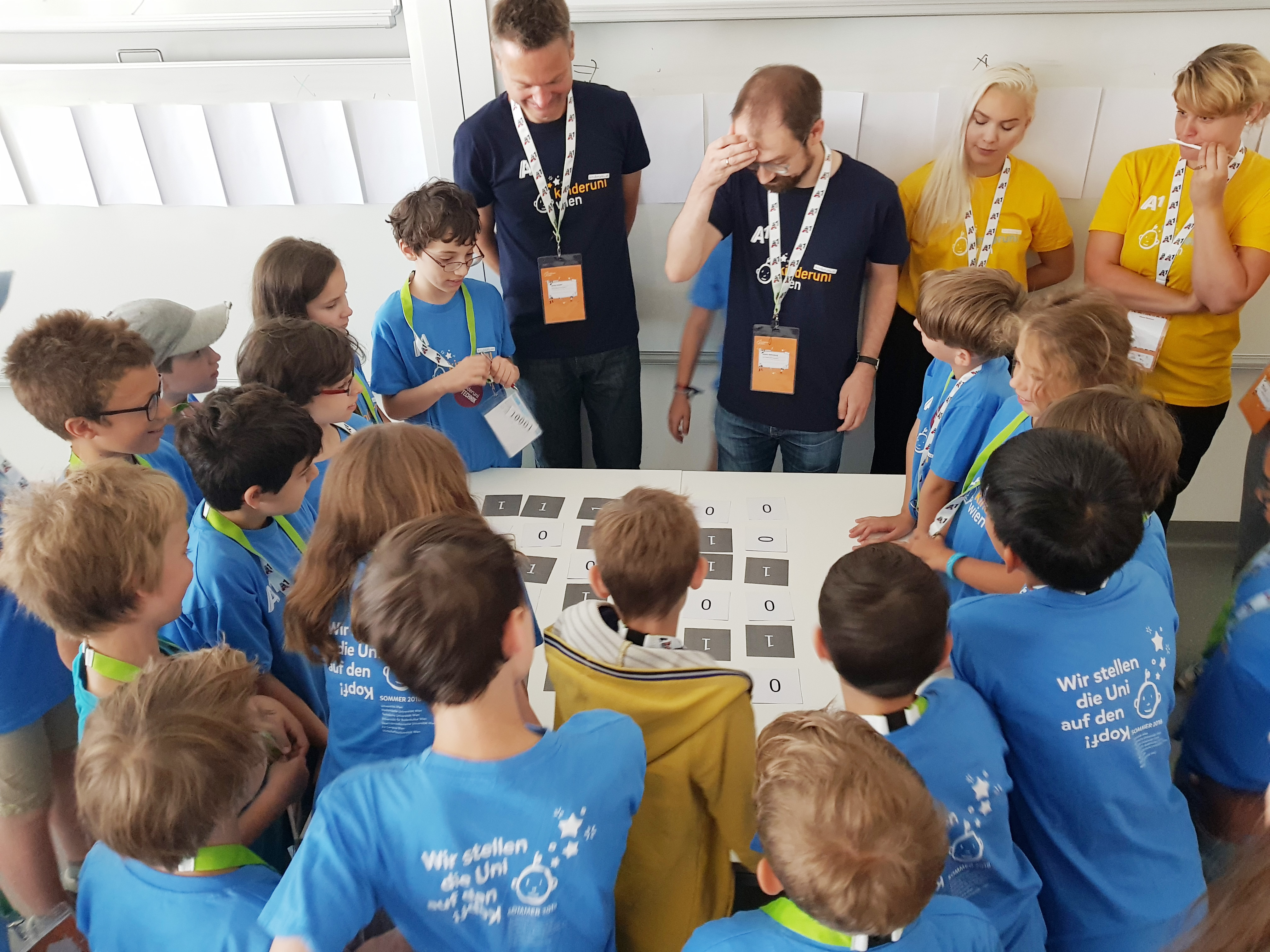 |
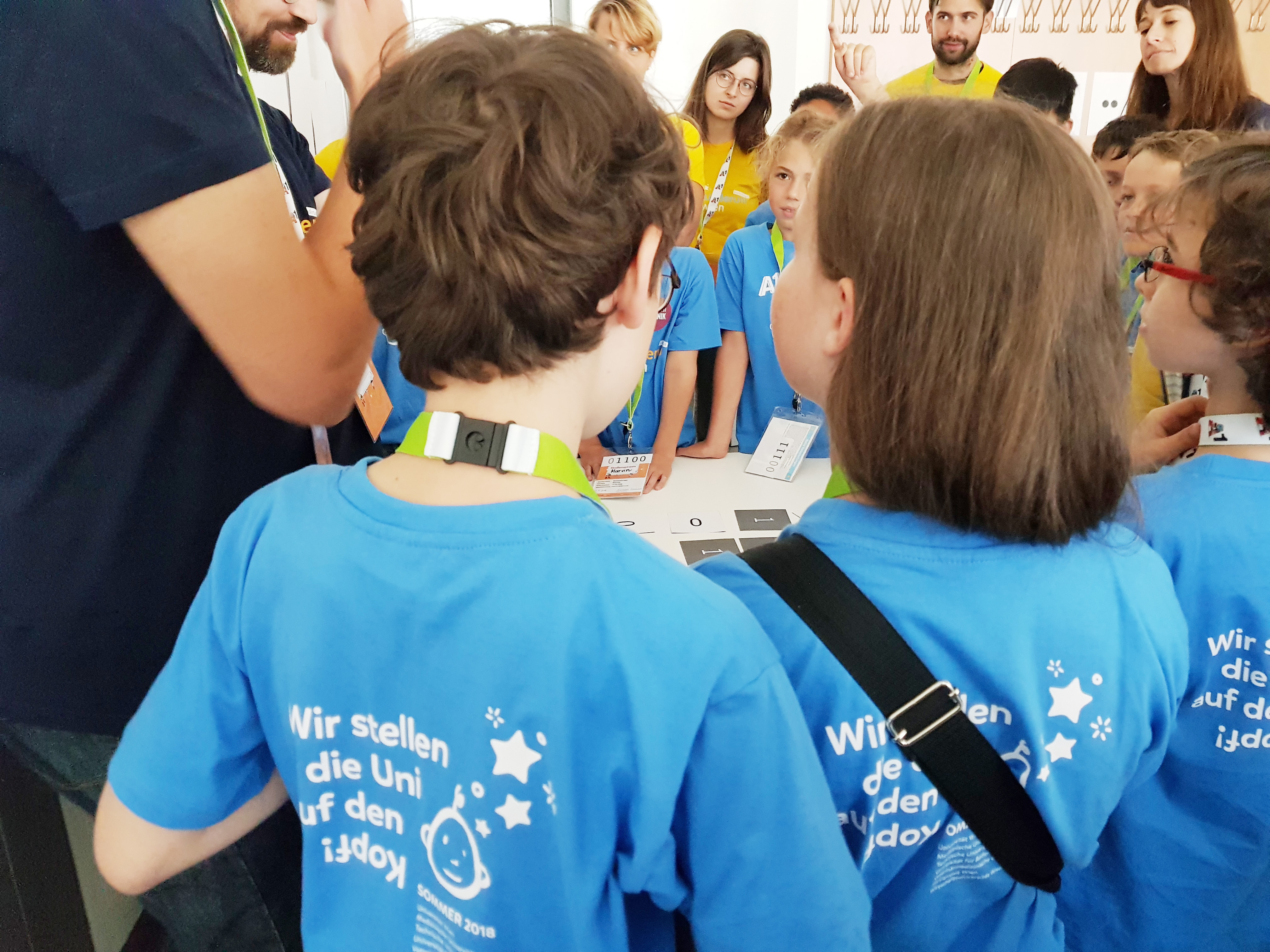 |
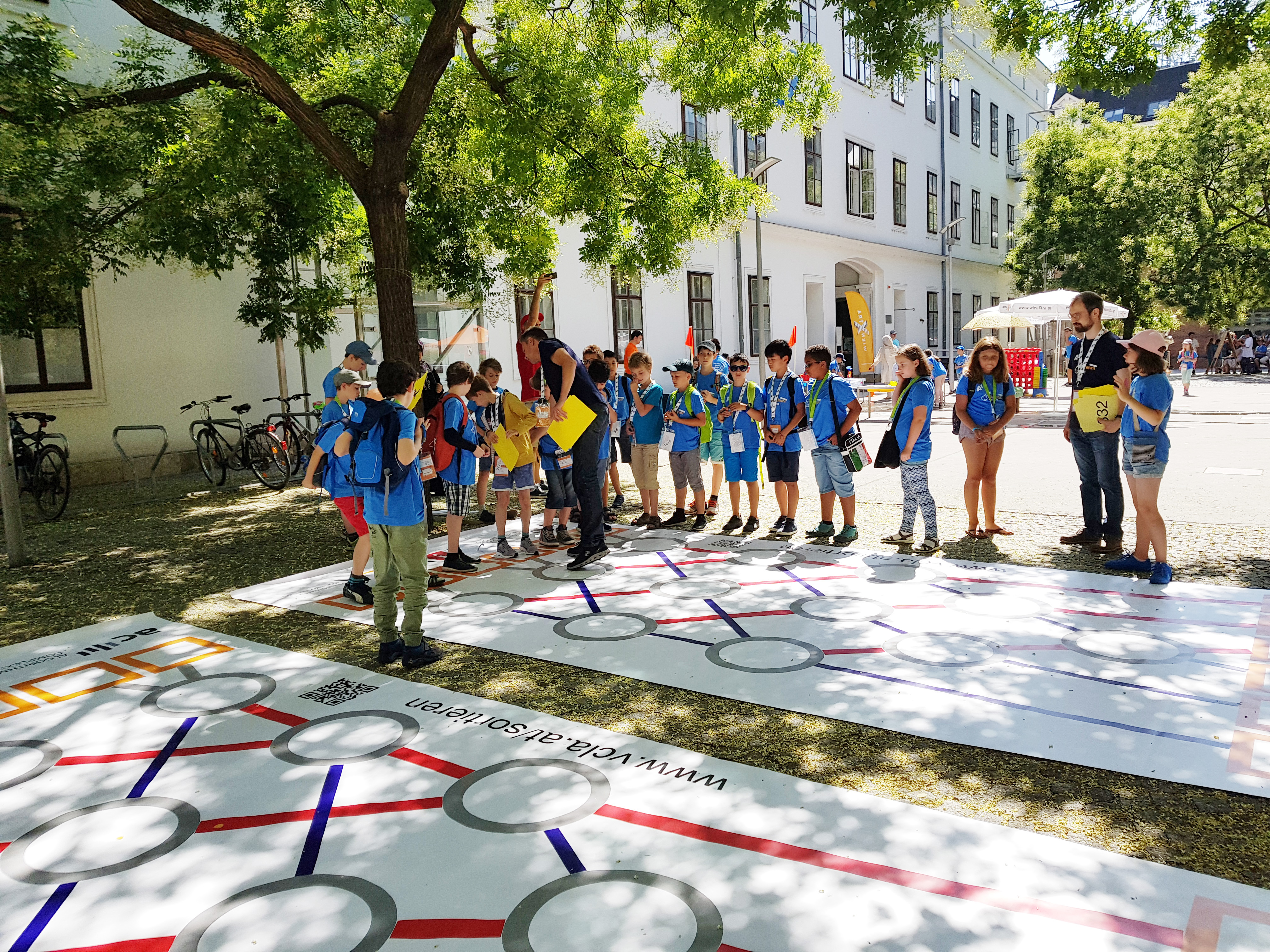 |
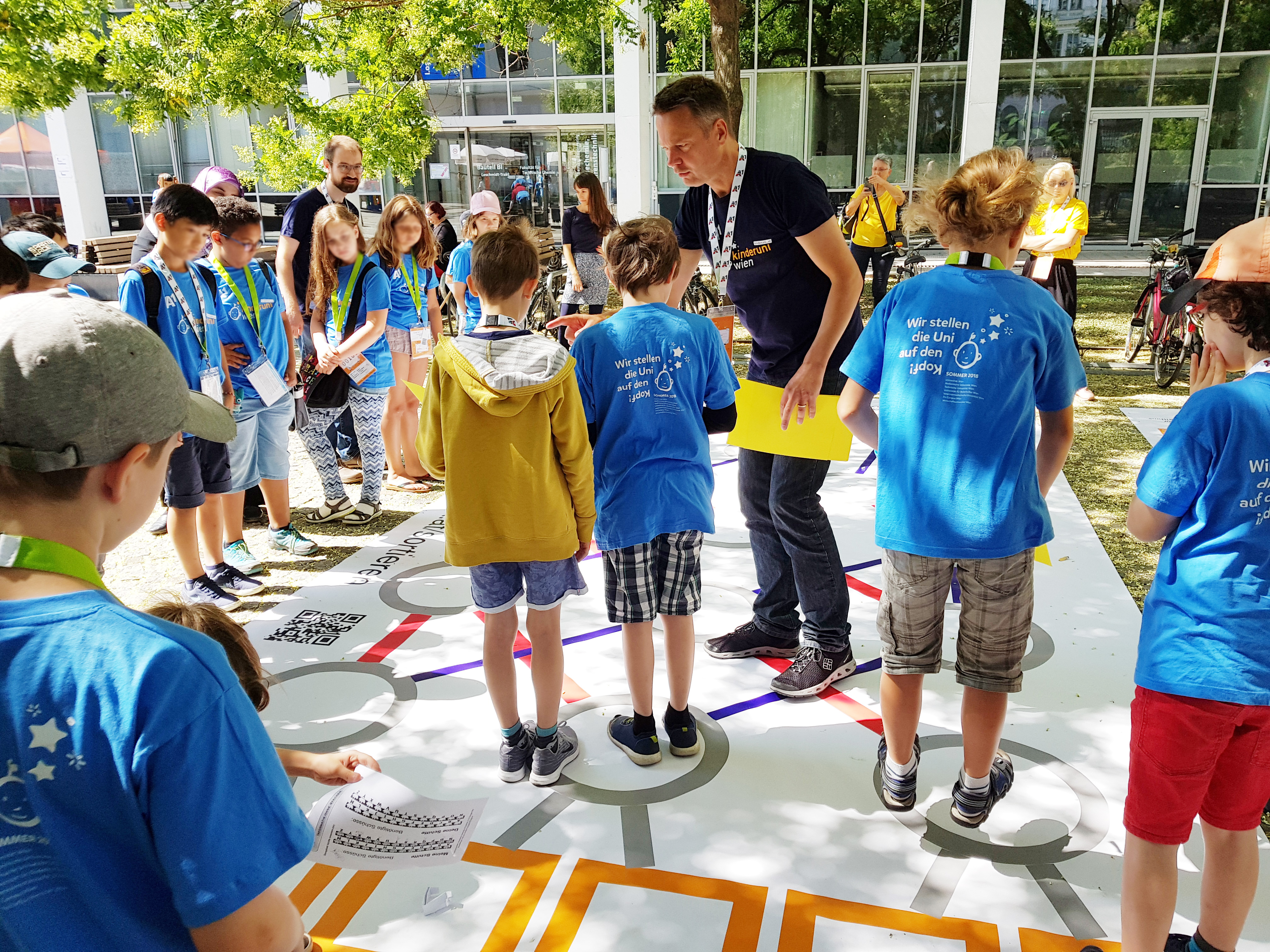 |
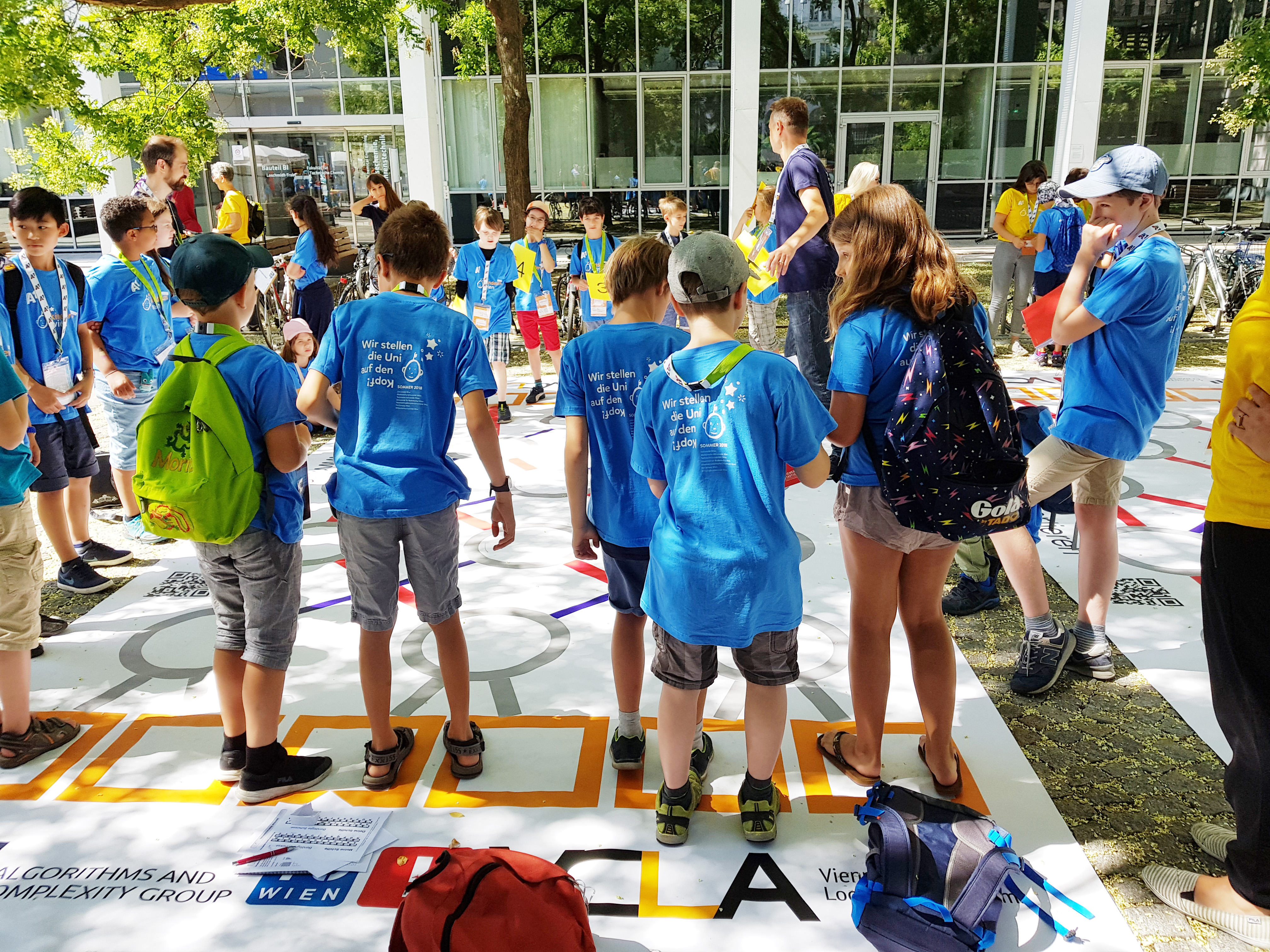 |
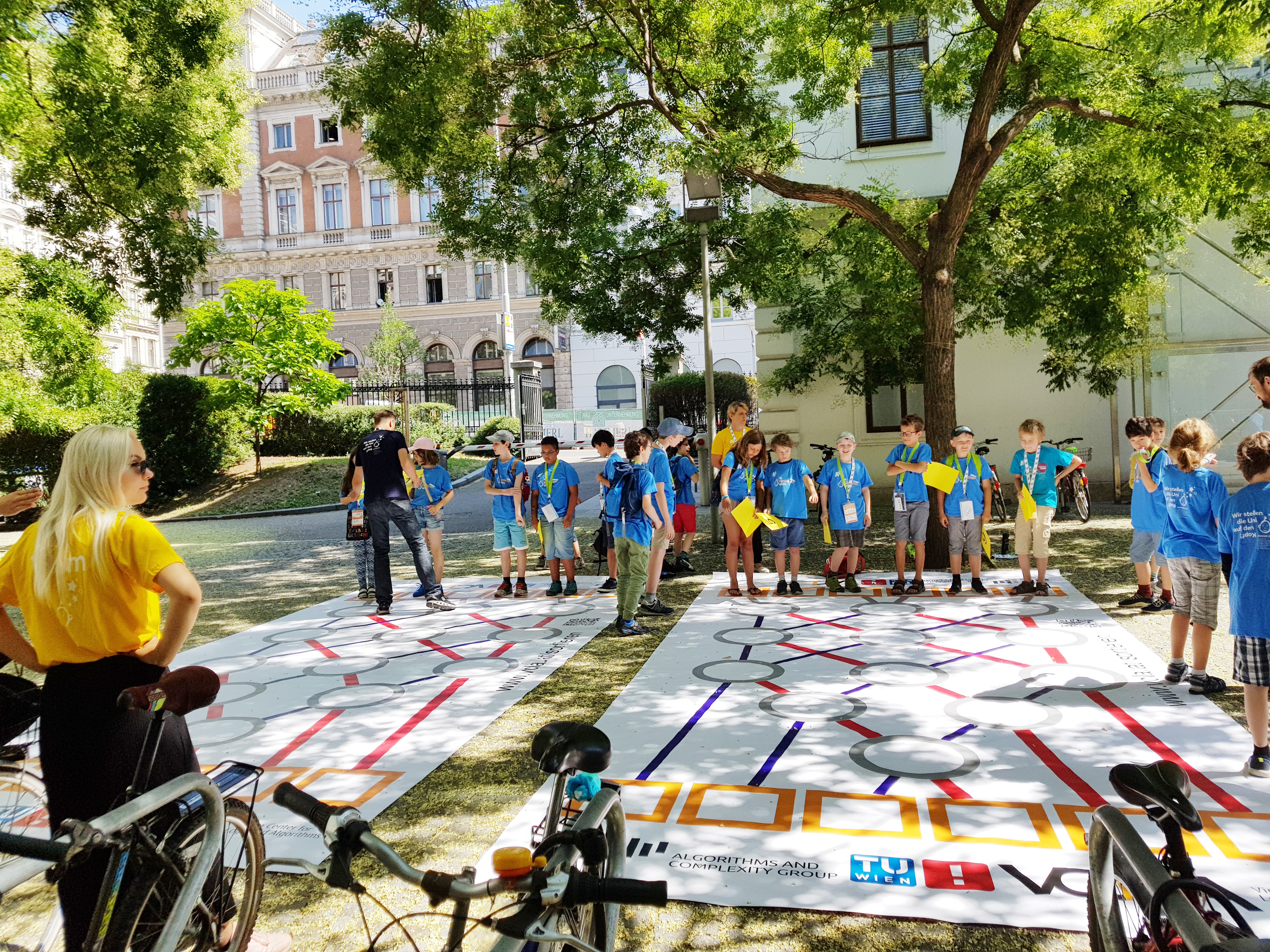 |
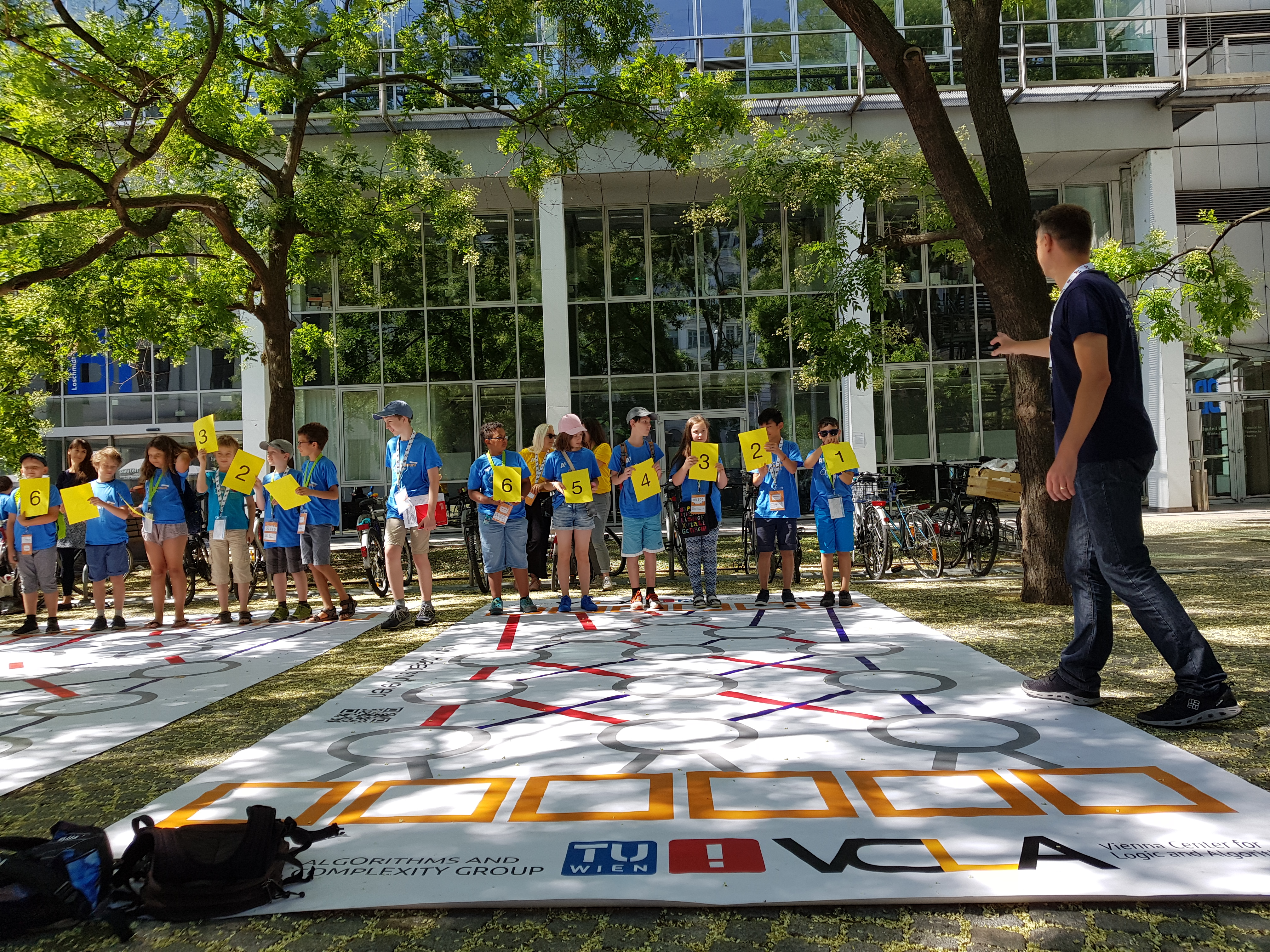 |
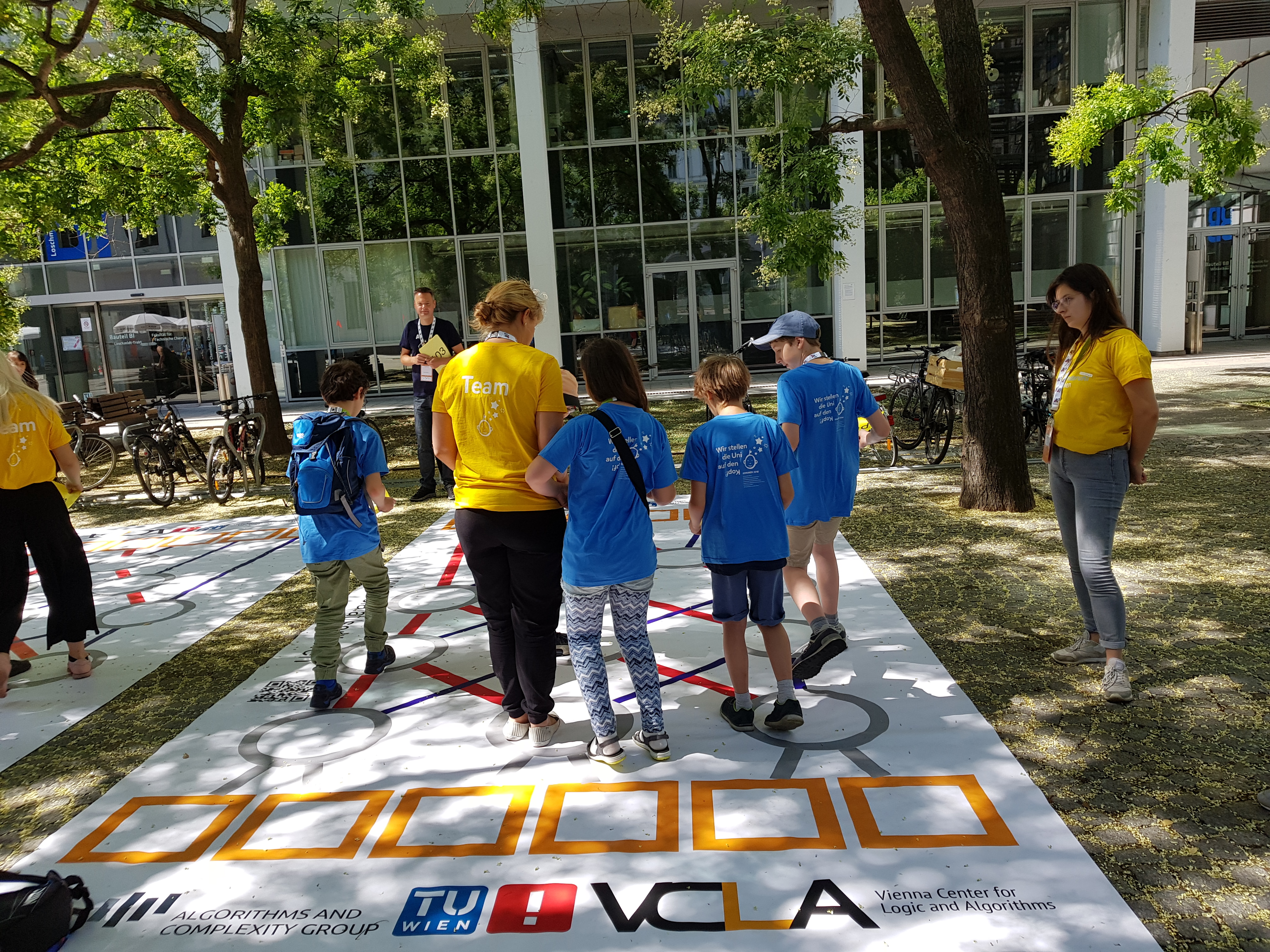 |
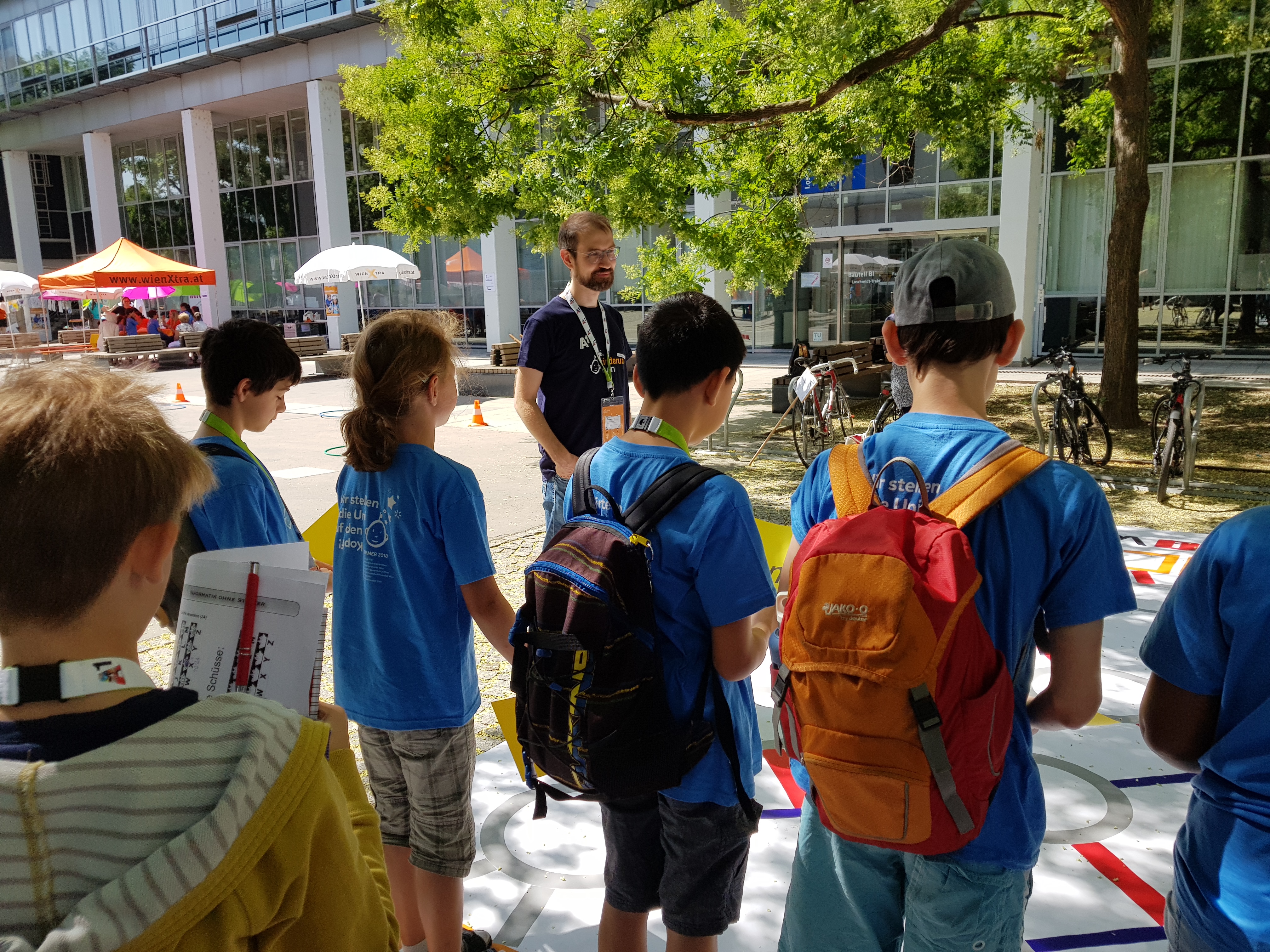 |
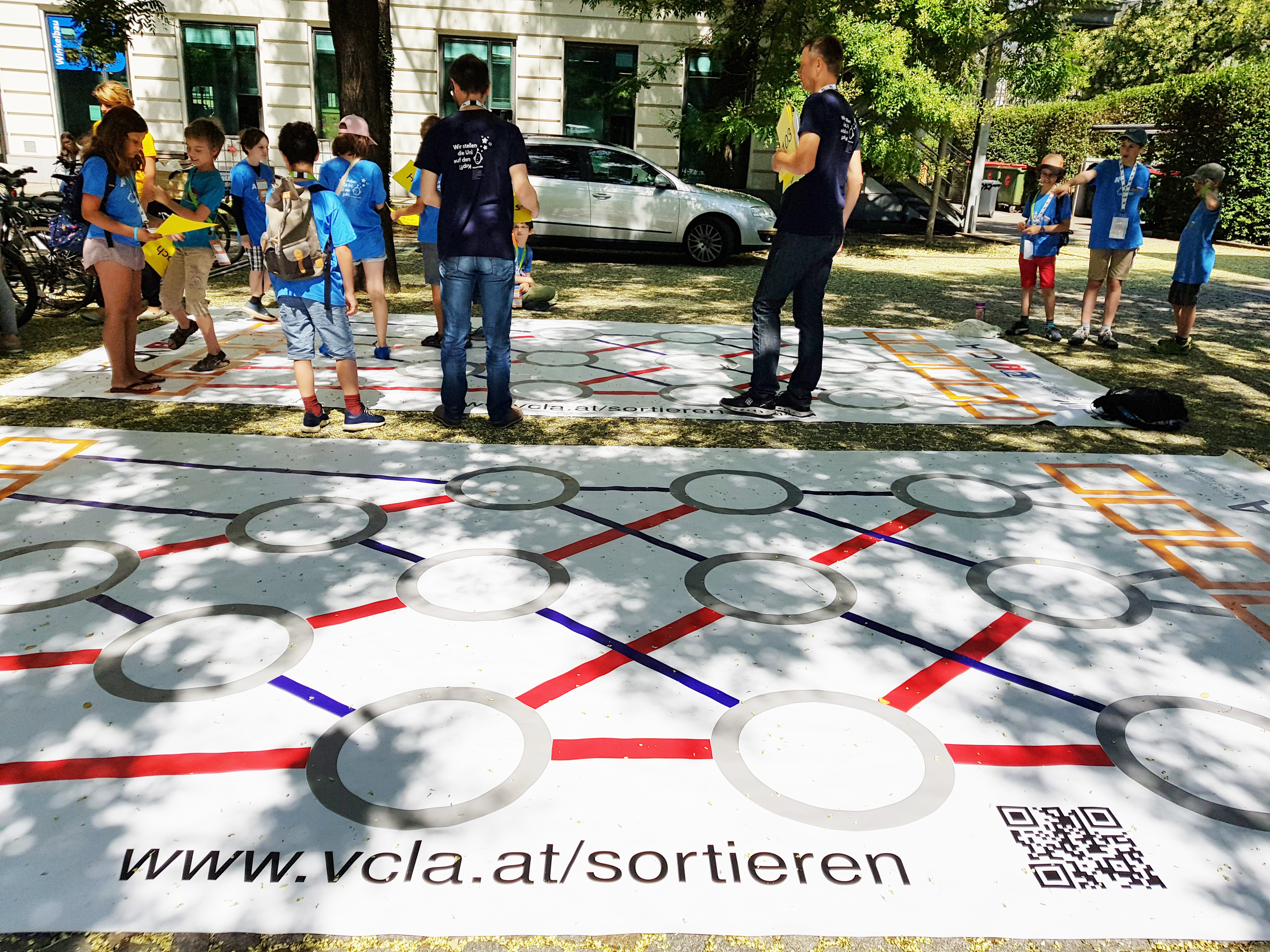 |
CS Unplugged
The experiments and tasks discussed here represent an implementation of Computer Science Unplugged – CS Unplugged. CS Unplugged is a well-known collection of teaching materials that is free and does not require the use of a computer. The goal of CS Unplugged is to teach the concepts of computer science by using games, puzzles, cards, markers, color pens, or simply movement. These teaching materials are now frequently used in schools, as they are “open source” and can be freely copied, shared, or edited.
